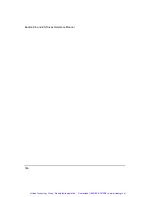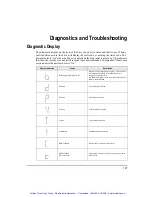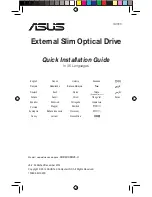
137
Tuning Procedures
If you enter an inertia value lower than the actual inertia, but is between 10 and 90 percent of
the actual, the drive will tend to be more sluggish than optimum but will usually operate
satisfactorily. If the value you enter is less than 10 percent of the actual inertia, the drive will
have a low frequency oscillation at speed.
Friction
This parameter is characterized in terms of the rate of friction increase per 100 motor RPM.
The range is 0.00 to 100.00 in units of percent continuous torque of the specified motor/drive
combination. The Friction value can either be estimated or measured.
If estimated, always use a conservative (less than or equal to actual) estimate. If the friction
is completely unknown, a value of zero should be used. A typical value used here would be
less than one percent.
If the value entered is higher than the actual, system oscillation is likely. If the value entered
is lower than the actual a more sluggish response is likely but generally results in good
operation.
Response
The Response adjusts the velocity loop bandwidth with a range of 1 to 500 Hz. In general, it
affects how quickly the drive will respond to commands, load disturbances and velocity
corrections. The effect of Response is greatly influenced by the status of the High
Performance Gains.
With High Performance Gains disabled, the actual command bandwidth of the drive system
will be equal to the Response value. In this case the load disturbance correction bandwidth is
fixed at approximately 5 Hz. Increasing the Response value will reduce the drive’s response
time to velocity command changes but will not affect the response to load or speed
disturbances.
When High Performance Gains are enabled, the actual response bandwidth is three to four
times the Response value. In this case, it affects both the velocity command and the load
disturbance correction bandwidth. Increasing the Response when the High Performance
Gains are enabled will increase loop stiffness. With High Performance gains enabled, the
maximum Response level recommended is approximately 100 Hz.
If the Inertia Ratio and Friction values are exactly correct and the High Performance Gains
are enabled, changing the Response will not affect the damping (percent of overshoot and
number of ringout cycles) to velocity command changes or load disturbance corrections but
will affect their cycle frequency. The response level should be decreased as the load to motor
inertia ratio increases or if High Performance Gains are enabled.
High Performance Gains
Enabling High Performance Gains fundamentally affects the closed loop operation of the
drive and greatly modifies the effect of the Response parameter. High Performance Gains are
most beneficial when the Inertia Ratio and Friction parameters are accurate.
Artisan Technology Group - Quality Instrumentation ... Guaranteed | (888) 88-SOURCE | www.artisantg.com
















































